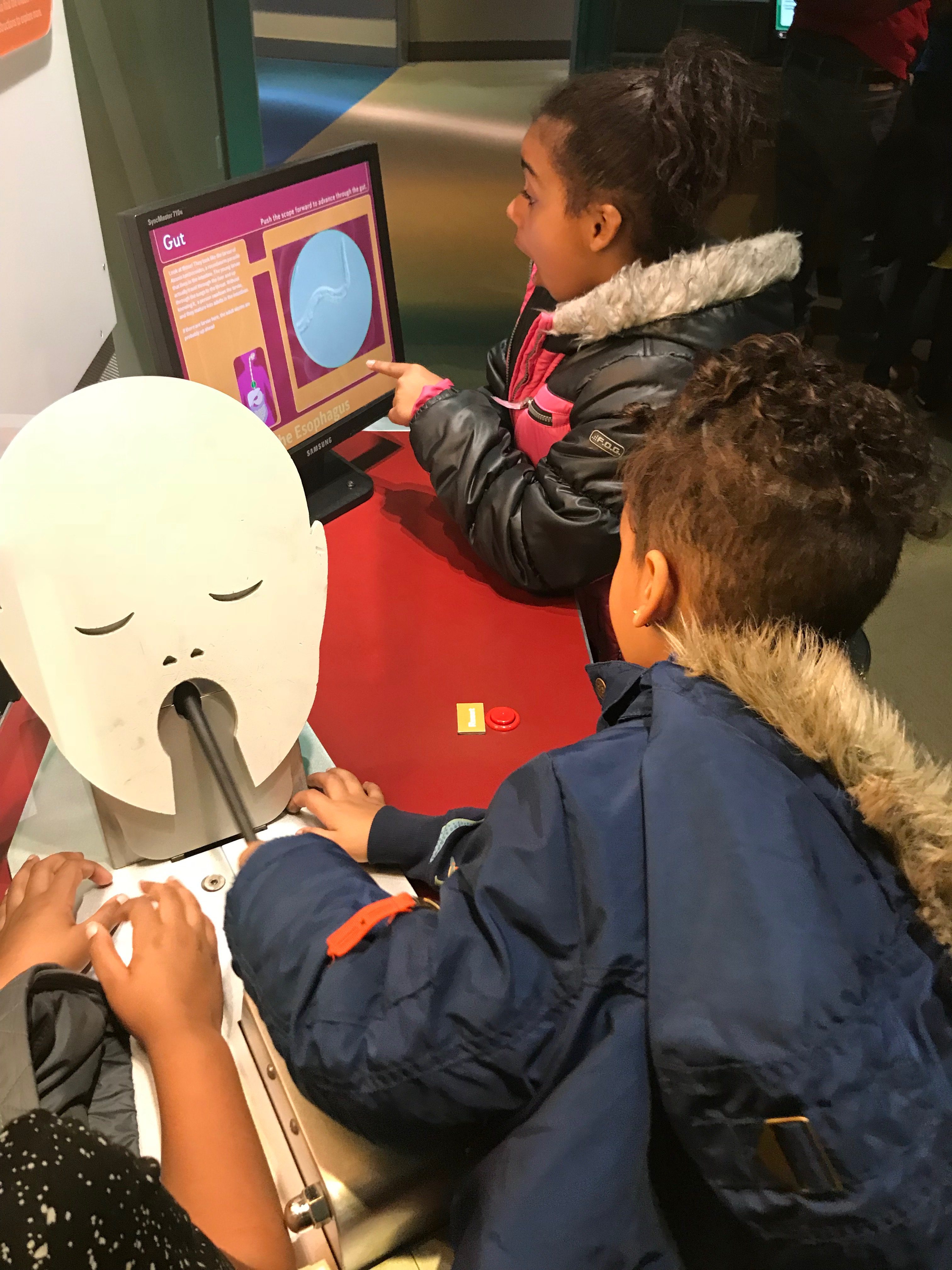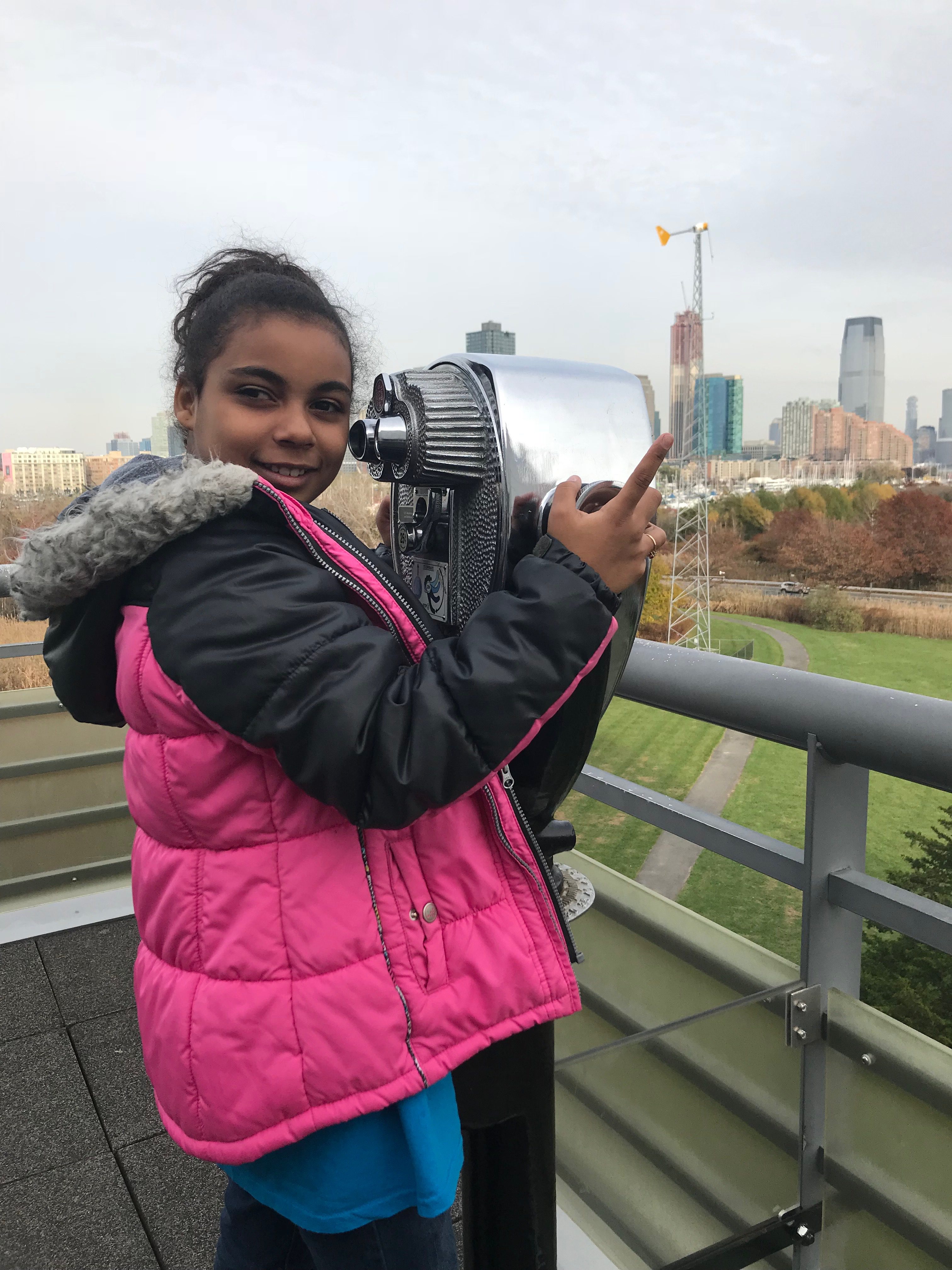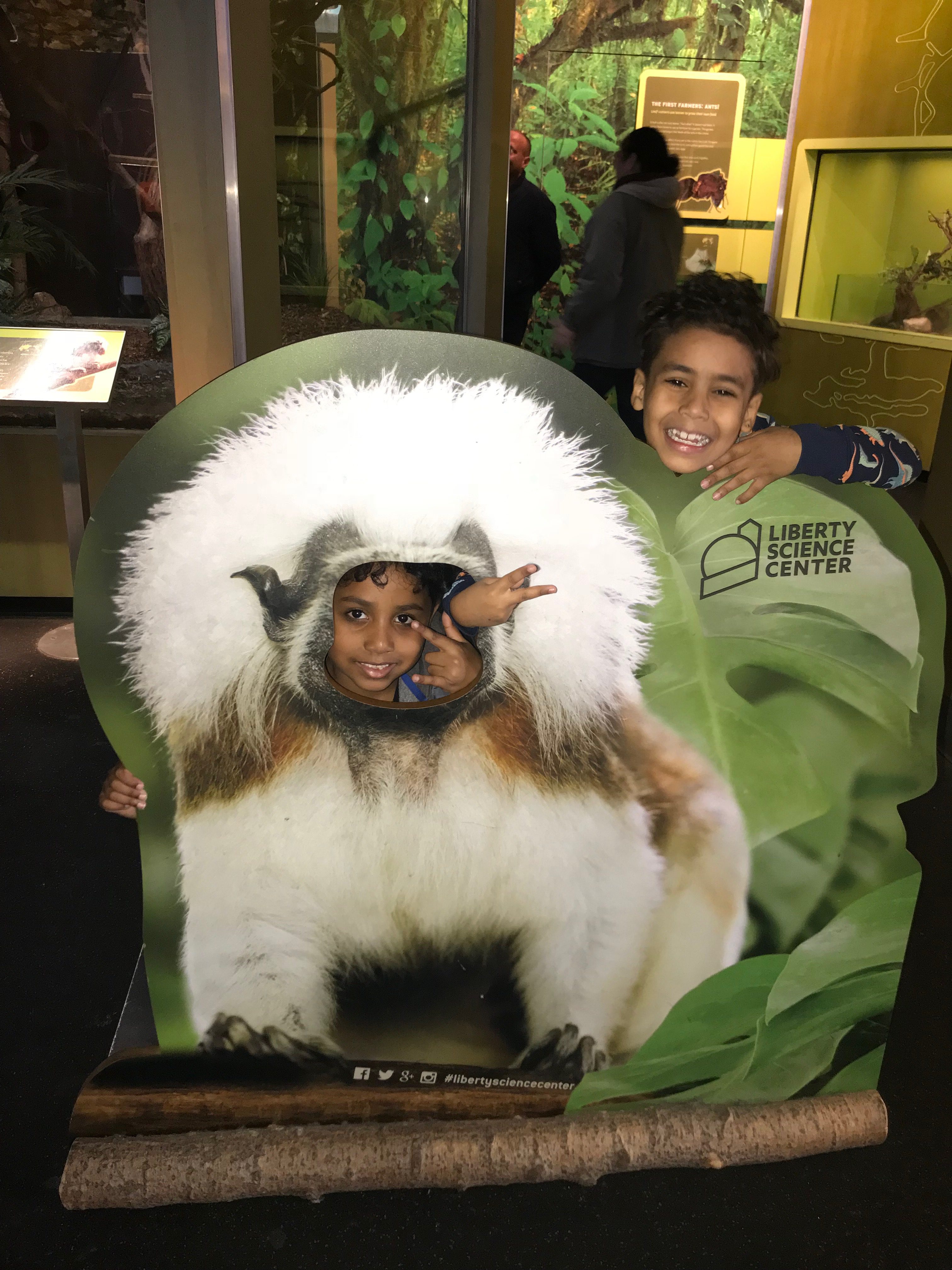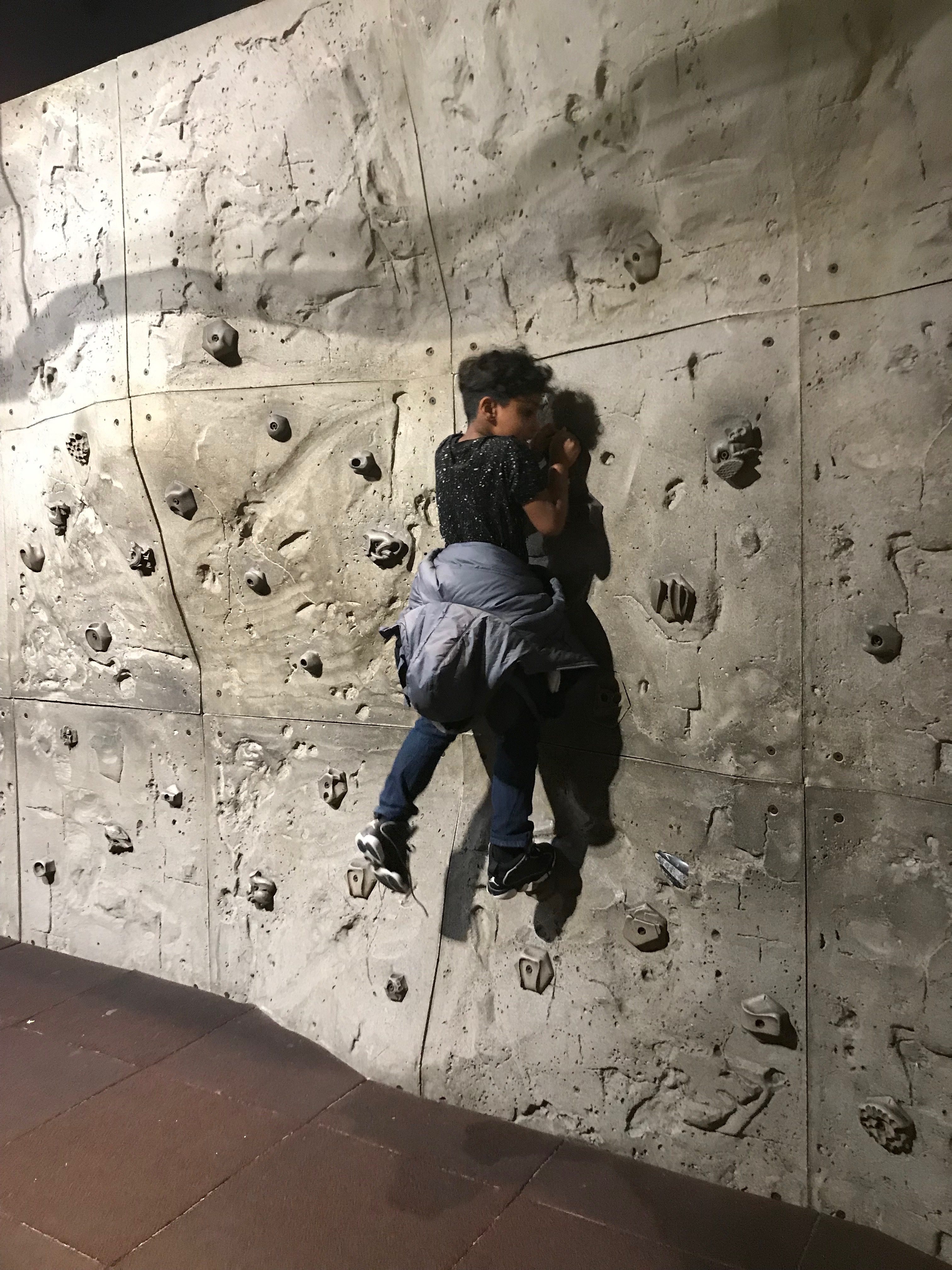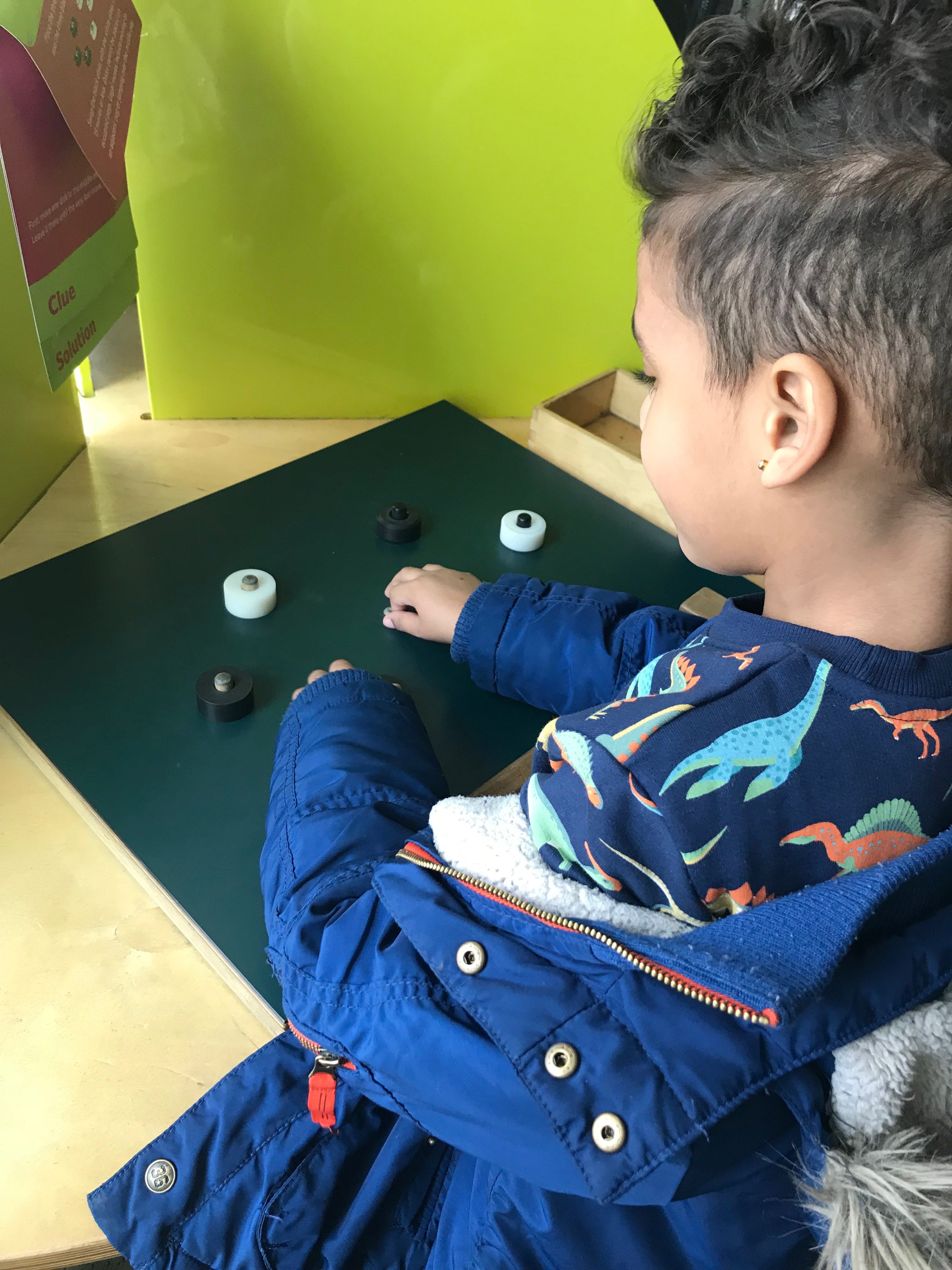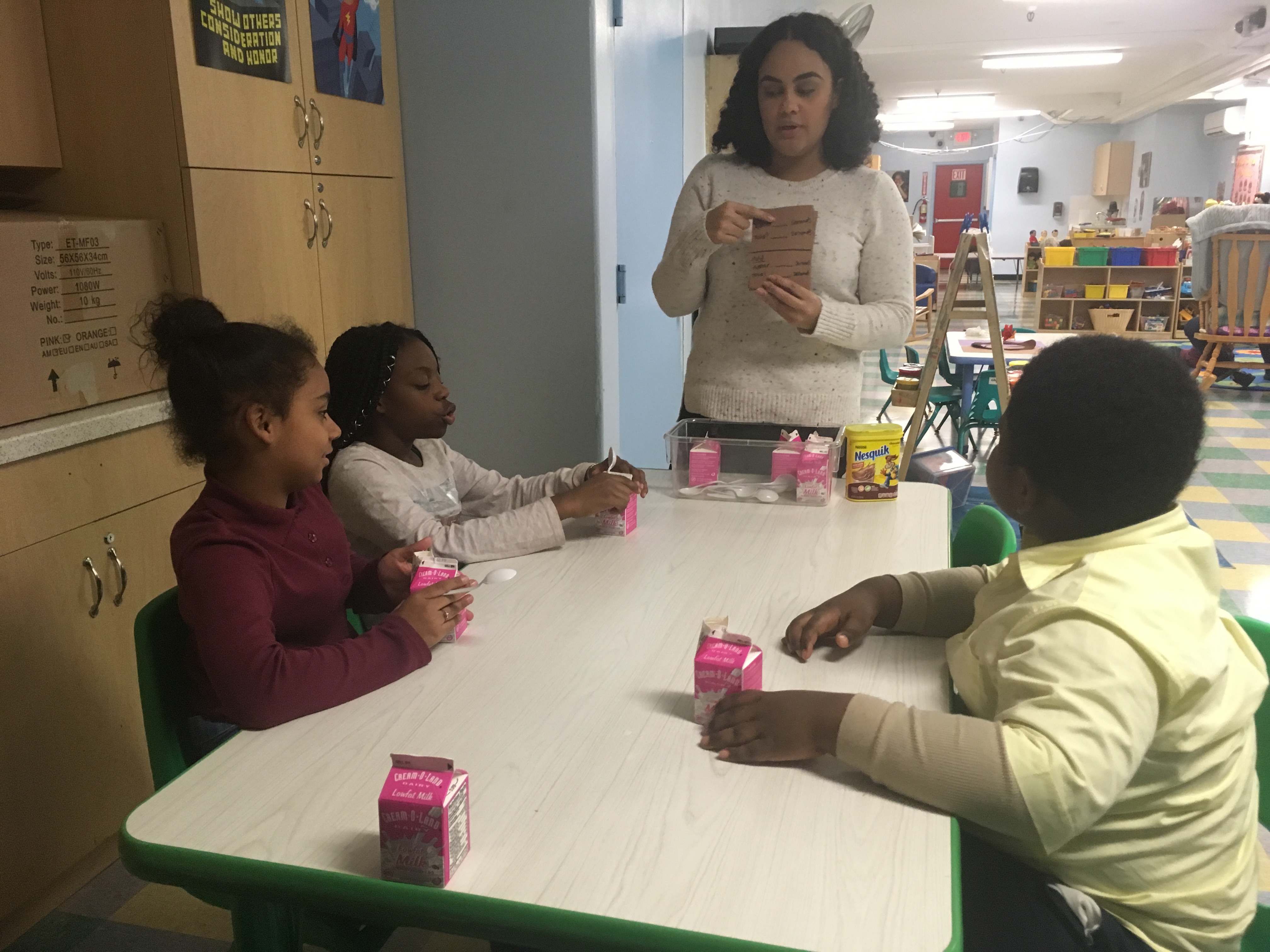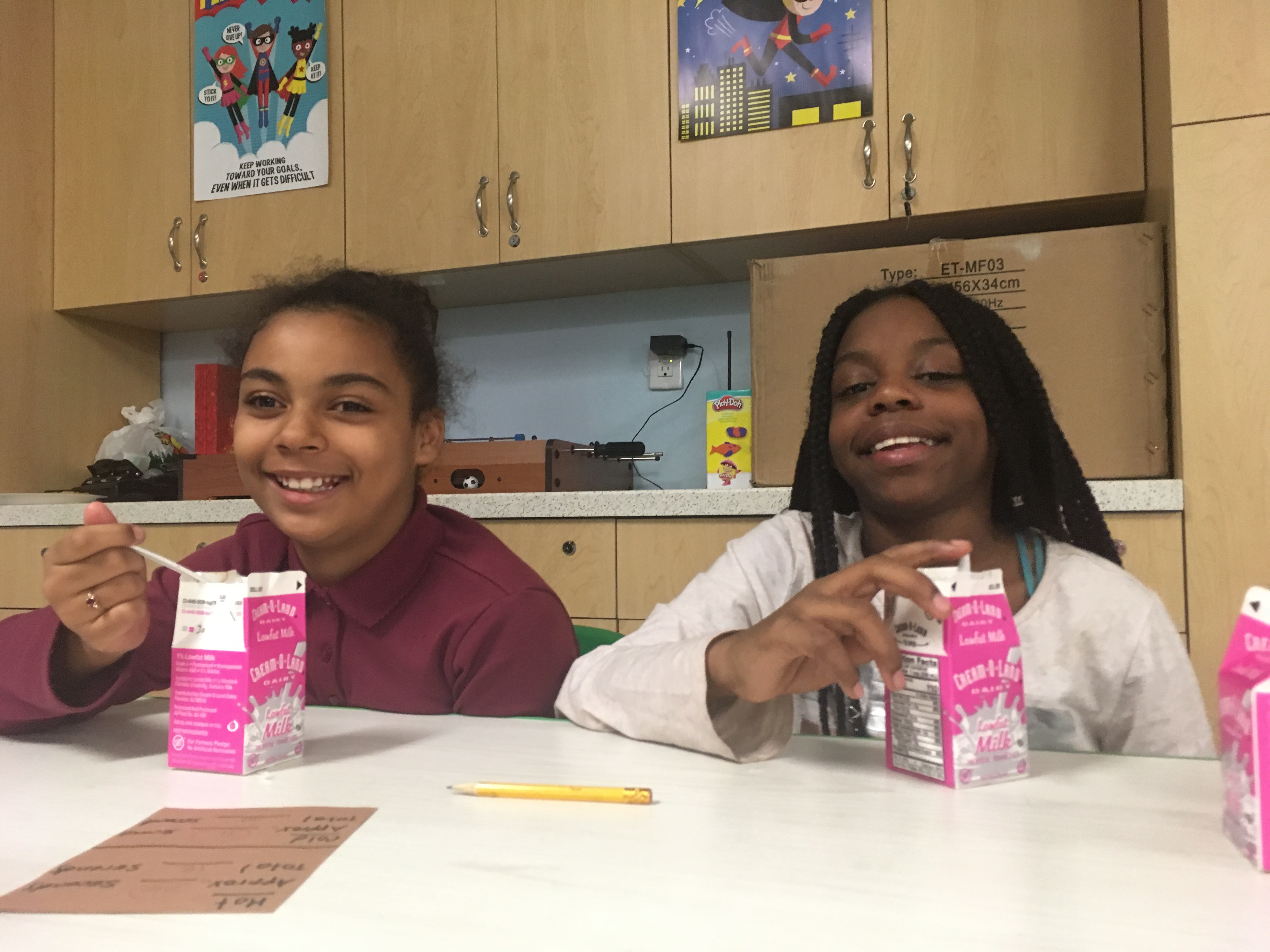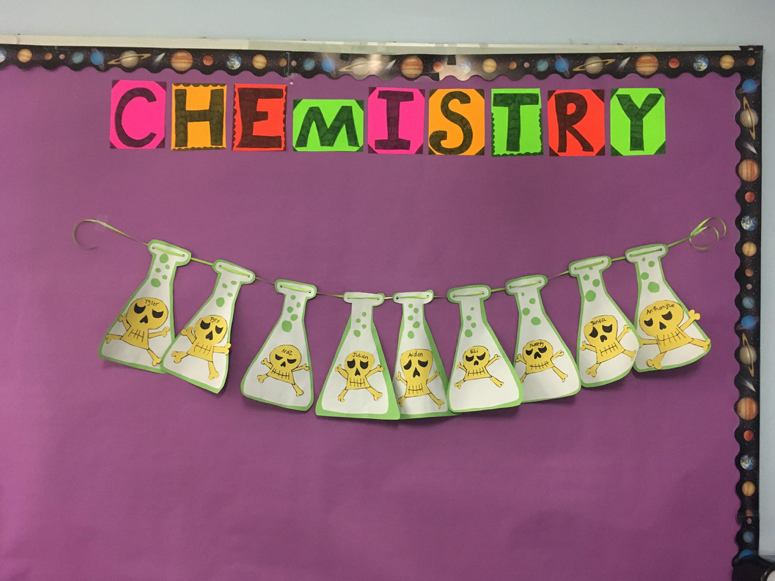At Williamsbridge Recreation, every month brings a new theme for educational engagement, often focusing on topics underserved in the classroom.
The highlight of last month’s science theme was a KidCare-sponsored trip to the Liberty Science Center in Jersey City, NJ where students engaged with exhibits exploring the human body, animal science, and mechanics.
A rock-climbing wall taught students about friction, while a pixelated wall installation offered a dazzling lesson on color. The Dream Machine, an interactive sensory exhibit, allowed students to produce combinations of colors, sounds, and scents through the use of bicycle pumps.
“The kids loved it there, it was just endless hands-on and whole-body learning,” said Education Specialist Bobby Valentin. “There were sensory areas that included smell and voice audio that we do not have in the program, so them getting a chance to learn about that was awesome.”
Students were especially fascinated by an exhibit on human anatomy, where they were able to conduct a mock surgery extracting a tapeworm, accompanied by real footage inside the human body and a jar of tapeworm specimens.
Back at Williamsbridge, the field trip capped off a month spent exploring new science topics in creative and innovative ways. Valentin designed a series of daily hands-on science games and activities to compliment students’ regular homework help and recreation programming.
On one occasion, students crafted rubber band paddle boats, using trial and error to assemble a makeshift propeller. They also participated in an activity called ‘fishing for ice,’ in which they learned about the impact of salt on the freezing point of water by adding salt to a string used for ‘fishing’ ice.
During an experiment considering the absorption properties of hot chocolate, Valentin guided students through a series of videos explaining the impact of form and temperature on absorption.
She then handed out two milk cartons, one hot and the other cold. In pairs, the students made predictions comparing how fast the hot chocolate powder would dissolve in the hot and cold milk.
“Hot milk dissolves chocolate powder fast and the cold milk takes a little longer,” T (11 years old) predicted. “I want to drink it already,” her partner J (10 years old) added.
One student was then assigned to stir the powder into the hot milk carton, while the other timed the absorption time. Students then repeated the experiment with their roles reversed using the cold milk carton.
As T predicted, the hot milk carton dissolved the powder more quickly than the cold milk carton, due to the chemical effects of temperature on absorption.
After discussing (and drinking) the results of their experiment, the students unwinded with a round of twister and Just Dance.
T was positive about the use of such interactive fun for exploring new science topics.
“It was good,” she said. “My favorite part was drinking it.”

